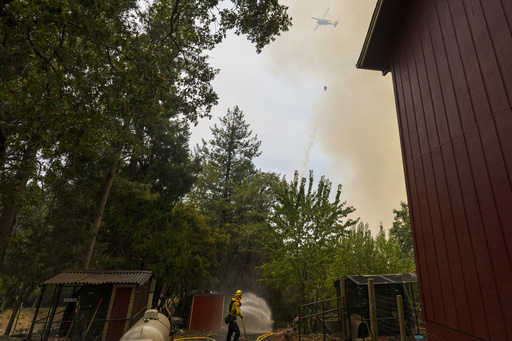Decades of aggressive fire suppression practices and the effects of climate change have set the stage for an enormous wildfire in northern California and numerous smaller ones across the western United States and Canada, experts say. These fires are spreading faster and are more challenging to combat compared to those in the past. Experts suggest that the key to preventing future wildfires from becoming so destructive is to implement controlled burns, a method utilized by indigenous communities for centuries, although they recognize that implementing this change will be difficult.
The ongoing fires have ravaged hundreds of square miles, with the Park Fire in California being the largest blaze this year at 544 square miles. The intensity of these fires and their rapid spread have drawn comparisons to the catastrophic Camp Fire of 2018, which claimed 85 lives and destroyed 11,000 homes in Paradise. Other areas in the western US and Canada are also facing threats from swiftly moving flames, with over 110 active fires covering 2,800 square miles in the US alone.
Experts note that wildfires are growing in size and severity, with a research scientist from Yale’s School of the Environment describing recent fires as “amped up.” While the frequency of wildfires may not have increased significantly, their magnitude and severity are exacerbated by the warming climate. In California, ten of the state’s 20 largest fires have occurred in the last five years, signaling a troubling trend attributed to climate change-induced weather variability.
These fires burn with extreme intensity day and night, making firefighting efforts increasingly challenging. In some cases, the intensity and heat of the fires are transforming forests into different ecosystems, hindering their ability to regenerate. The practice of suppressing fires in the past has led to an accumulation of fuel in many areas, resulting in more intense and damaging fires than those that would naturally occur.
Experts emphasize the need to reintroduce controlled burning practices, which were historically utilized by indigenous communities and for managing vegetation in some regions. Embracing the controlled use of fire is crucial to mitigating wildfire risks and restoring ecosystem balance, although the complexities of implementing such practices present significant challenges. Despite the difficulties, experts stress that addressing the wildfire threat effectively necessitates a proactive approach involving controlled burns to prevent uncontrolled, destructive wildfires from becoming the new norm.
